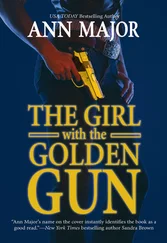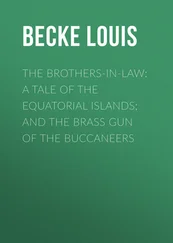Citizens of the real West seemed far more appalled by the levels of violence back east. On March 19, 1872, the Missouri Republican called New York City a “Murderers’ Paradise” and reported that “New York… has settled down into the usual condition of chronic indifference, and the murdering business is carried on with an impunity which would be really amusing, were the matter less serious. Hardly a day passes that some one does not receive an eternal quietus at the hands of an assassin.”
Meanwhile, the novelists, pulp writers, and news reporters who comprised the nation’s media were busy confronting a creative challenge: how to rationalize the sheer excitement of the westward expansion, with its attendant gold and land fevers, and the mundane, harsh reality of ordinary frontier life. The answer came readily. Sheriffs became avenging angels, bar fights turned into ritualized duels in the hot noon sun. Dime novelists began transforming frontier characters into heroes even as the real flesh-and-blood figures went about the business of killing, robbing, or peacekeeping. Buffalo Bill Cody was the hero in 557 dime novels. Frank Tousey gave us the James Boys series about Jesse and Frank James even as the pair continued committing crimes. Edward Z. C. Judson, writing as Ned Buntline, turned Wyatt Earp and Wild Bill Hickok into the steely-eyed lawmen of contemporary myth. The first book about Billy the Kid appeared July 15, 1881, the day after Sheriff Pat Garret killed him. The book described Billy as wearing a dragoon jacket “of finest broadcloth” and a hat “covered with gold jewels.” Owen Wister’s The Virginian , published in 1902, became a best-seller and the prototype of the modern western. Wister gave us one of the most-quoted passages of literature when his hero, having been called a son of a bitch, replied, “When you call me that, smile !”
The press spared no exaggeration to populate the West with living legends. Between Dodge City and Tombstone, Deadwood and Sacramento, was a vast, bleak terrain whose immensity we can only begin to appreciate today when flying over such still-desolate territories as Nevada and Utah. The robberies, murders, and Indian battles that did occur were big news partly because that immense expanse of desperately lonely acreage generated so little other news.
The press rose to the challenge.
After Jesse James and two accomplices robbed a Kansas fair on September 26, 1872, the Kansas City Star applauded the deed: “It was as though three bandits had come to us from storied Odenwald, with the halo of medieval chivalry upon their garments, and shown us how things were done that poets sing of. Nowhere else in the civilized world, probably, could this thing have been done.”
Never mind that these chivalrous heroes shot a young girl in the leg.
After Jesse was murdered in 1882, the Kansas City Journal wailed, “Goodbye, Jesse!”
The National Police Gazette made a goddess of Myra Belle Shirley, known best as Belle Starr and commonly imagined as a beauty. (She was played by Gene Tierney in the 1941 movie Belle Starr .) The Gazette described her as “the Bandit Queen,” and reported: “She was more amorous than Antony’s mistress, more relentless than Pharaoh’s daughter, and braver than Joan of Arc.”
The true West of course was nothing like what readers in the East were instructed to imagine. Belle Starr, for example, was no Gene Tierney. Belle was a profoundly homely woman with a deeply pocked face who stole cattle and horses, robbed stagecoaches, and had a penchant for sleeping with killers and one of her two illegitimate sons. This boy, Ed Reed, later shot her in the back and, after she had fallen, shot her again for good measure, killing her.
Strip away the legends enshrouding the famous outlaws and what you find are pathological killers. Billy the Kid, far from being the glamorous James Dean–like character of popular imagination, was once described as an “adenoidal moron.” In a rare act of clear-eyed journalism, the Silver City New Southwest and Grant Herald observed: “Despite the glamour of romance thrown about his dare-devil life by sensational writers, the fact is, he was a low-down vulgar cut-throat, with probably not one redeeming quality.”
Clay Allison, one of the most feared outlaws, was by all appearances a psychopath. He was discharged from the Tennessee Light Artillery after being judged “incapable of performing the duties of a soldier because of a blow received many years ago.” This head injury apparently caused wild swings in his moods, “from mania to intense despondency.” He was alleged to have killed fifteen men in his career as a “shootist,” and to have cut the head off one of them and brought it with him to a bar. Fabled gunfighter John Wesley Hardin killed forty-four men, perhaps as many as seventy-seven, yet the power of outlaw myth was such that in 1968 Bob Dylan still felt able to describe him in the title song of his album John Wesley Hardin as a Robin Hood–like character who “was always known to lend a helping hand.”
The national myth- werkes reserved its greatest distortions for the lawmen of the West. Contrary to popular belief, in many frontier counties and towns, sheriffs and marshals often went unarmed. Rather than shooting it out all day with itinerant gunmen, they confronted the mundane duties familiar to any city policeman today. In Leadville, Colorado, in 1880, the twenty-two-man police force made 4,320 arrests, most for intoxication and disturbance of the peace. The real marshal of Dodge City was responsible for street repair and killing stray dogs, but we never heard a word about this on “Gunsmoke.” In that mythic realm, Matt Dillon courted Miss Kitty; the real marshal of Dodge had to contend with Big Nose Kate, Noseless Lou, and Squirrel Tooth Alice. Wyatt Earp and his friend Bat Master-son were adept con men and gamblers who also happened to be lawmen. They were known around Dodge as “the Fighting Pimps.” Earp abandoned his common-law wife, Mattie, who later committed suicide. In a letter to her surviving family, the attending coroner called Earp “a gambler, blackleg, and coward.”
In the mythic West even homicide became a clean, honorable affair that adhered to the Code of the West. In fact, frontier homicide was just as mean and gritty as urban murder is today. Ambush was often the tactic of choice, preferably when the target was stone-cold drunk. Morgan Earp, one of Wyatt’s brothers, was assassinated by a rifle fired at him through a window. A thief named Robert Ford murdered Jesse James by shooting him in the back of the head. The police officer who crept up behind John Wesley Hardin in an El Paso bar and shot him dead no doubt believed he was merely being prudent, given Hardin’s reputation. In one notorious attack, members of the John Daly gang in Aurora, Nevada, set out to kill William Johnson, the operator of a way station whose employee had killed a horse-thief friend of Daly’s. After running an errand in town, Johnson went to a bar where a member of Daly’s gang pretended all was forgiven and bought him a few drinks. When the bar closed, they moved to another saloon, where Daly and other members of the gang were waiting. The good fellowship continued until about four-thirty A.M., when Johnson left. Daly and three other gang members, including a man named William Buckley, ambushed him. Buckley knocked Johnson down. Daly shot him through the head. Then Buckley slashed his throat.
The strategy for such attacks may have been dictated partly by the fact—a fact one does not see mentioned very much in contemporary firearms ads that evoke the frontier—that the cowboy’s trusty six-shooter wasn’t all that trusty. Accidents and malfunctions were common. “Lawmen and outlaws alike knew the dangers and limitations of the revolvers they sometimes carried but rarely displayed,” wrote Frank Prassel. “Shooting would be avoided whenever possible, and when demanded it would often be done from cover or concealment.”
Читать дальше


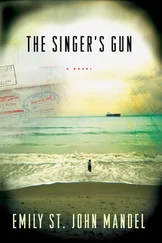

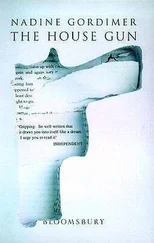

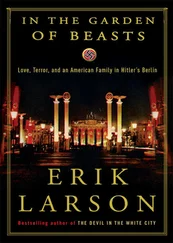

![Ричард Деминг - Whistle Past the Graveyard [= Give the Girl a Gun]](/books/412176/richard-deming-whistle-past-the-graveyard-give-t-thumb.webp)
